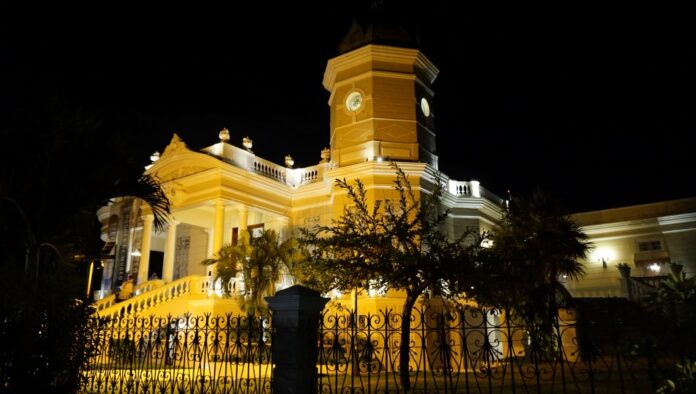The late 19th century mansion is today one of the most visited museums on Paseo Montejo
Tourism in Yucatan starts the week with strength. Although it is Monday, Paseo Montejo, one of the main arteries of the city, looks lively. Since winter is not over yet, the temperature does not exceed 27 degrees at noon, which is reflected in the large number of national and foreign tourists who comfortably walk along the avenue, famous for its great cultural variety.
An example is number 46 of Paseo Montejo, where at the end of the 19th century a high-class man, Aurelio Portuondo, ordered the construction of a mansion with representative architecture of the time to live with his wife.
However, due to the tensions generated by the Mexican Revolution, Portuondo fled to Cuba and sold the property to Avelino Montes Linaje, a renowned businessman. It was in 1906 that the now Quinta Montes Molina acquired part of its historical legacy, since Avelino Montes married María Molina, daughter of Olegario Molina Solís (governor of Yucatan from 1902 to 1906).
And it is that one of the daughters of this marriage, Josefina Molina, decided that the mansion should maintain its essence, so it became one of the most relevant historical sites in Merida, as it preserves the architectural and interior style of the Porfirian era.
Since 1956, the house was inhabited by the descendants of the Molina, but in 2006 it was decided to turn it into a museum, by agreement of the relatives and the Secretariat of Tourism Promotion of Yucatan.
In an interview with EL UNIVERSAL, the director of the place, Lilián Navarro, explains that the mansion needed maintenance, so the family decided that it was better to convert the space into an exhibition site. She adds that, because of the fame, dozens of tourists and neighbors asked to enter the house before it was converted into a cultural venue.
“We had to do a strong work of curatorship and research, it was necessary to find out the origin of the furniture, of the objects, their style, everything, it has been a work that we have done little by little, over the years, as it grows”, she points out. According to Navarro, it is important to preserve the site as a historical site, as it is one of the best preserved memories of the “green gold of Yucatan”, a period where the entity developed much of its architectural and social style.
She adds that tourism in Yucatan has shown recovery after the pandemic, and that the security of the city promotes that tourist visit cultural sites. “Merida has a lot to give, we have a lot of security, we feel it and we live it, that’s why tourism is one of the main economic sources”.
Source: El Universal






